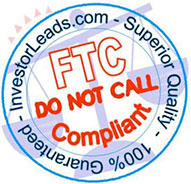Victory Over Voicemail
Author: Dave Kahle
Topic: Cold Calling
Not so many years ago, there was no such thing as voice mail. Today, it is almost impossible to call a customer on the phone and get directly to him. The electronic gatekeeper, voice mail, stands in the way. Voice mail has become the number one irritant for salespeople in the Information Age.
And with good reason. If you can’t communicate with your customers, you can’t get to see them. And if you can’t get to see them, you’ve been knocked out of the sales process. Unless you learn to work through this electronic obstacle, the likelihood of you making a sale is dramatically reduced.
So, voice mail is one of those irritating issues that threaten the very heart of what you do. You’ve must solve the voice mail dilemma or you won’t be in business very long.
Applying the Six Hats of the professional salesperson.
There are six hats that a professional salesperson must wear to succeed in the 21st Century. Each of these hats represents a set of skills and processes, and the successful salesperson must gain and use each as the situation warrants. The hats empower a salesperson to become:
- An Astute Planner.
- A Trusted Friend.
- An Effective Consultant.
- A Skillful Influencer.
- An Adept Human Resource Manager.
- A Master Learner.
Let’s begin by putting on the first hat of the 21st Century salesperson, Astute Planner. Recognize that voice mail is one of the most likely outcomes of your telephone call. So, don’t be surprised when you call a customer and are routed to voice mail. Instead, be prepared. Imagine that you are given the ability to create a 30-second radio commercial and beam it directly to your customer. What would be in that commercial?
That’s the attitude to take. So, before you make each telephone call, prepare a 30 second radio commercial (your voice mail message). Then you’re prepared for the likely occurrence of being routed to a voice mail system.
Next, put on the fourth hat, Skillful Influencer. You must put as much skill into your voice mail message as possible in order to influence the customer to take action. Begin by focusing on the action that you want the customer to take. If you’re cold calling for a first appointment, the action you want the customer to take is to get back to you, either in person or via email or fax. If you’re following up on a proposal or a previous visit, you want a different action from the customer. Keep clearly in mind the action you want them to take, and bring all your skills of influencing, using the presentation process as best you can, to deliver a powerful presentation. Don’t sell your product, sell a return call. Give them a reason to call you back.
The presentation, like all of them, should traverse through the steps of the basic presentation process. Identify some need/interest you believe your customer has, identify some thing you can do to assist him, show him how that will benefit him, and ask for action. Use your language and tone of voice to convey competence and confidence and to make your customer comfortable with you. It’s the influencing-presentation process capsulized in 30 seconds.
As long as you have your Skillful Influencer hat on, you can use it to take a broader view of the situation and create a series of communications of which your voice mail message is merely one piece.
Think about using alternate media to make a series of contacts with the customer, to precondition him/her to respond to your call. For example, you may send a letter, follow it with an email, follow that with a fax, and then make your phone call.
A few years ago, one of my clients, an advertising agency, developed an incredibly creative way to precondition the customer to accept the initial phone call. Here’s how the program worked. They first qualified a list of 100 people they wanted to see. During the first week of the program, they sent each of the 100 a small box, wrapped in plain brown paper, with a hand-printed address on it, and no return address. In the box was a sugar cube with a small printed message saying, “Keep it sweet.” Nothing else. You can imagine the curious response of the people receiving that box.
The second week, another package came in the mail. It was wrapped and addressed in the same way, only this time, the box contained a lemon. The message read, “Don’t let it go sour.”
Week three came, and a third box arrived. Same wrapping, same appearance. This package contained some tinsel foil with the message, “Make it sparkle.” Week four arrived, and the anticipated delivery of the fourth box. In it was the business card of the salesperson with a note, “I’ll be calling you for an appointment.” You may be interested in the result. One hundred percent of the recipients of that series of packages set appointments with the sales reps. The electronic barrier of voice mail was overcome by creatively pre-conditioning the customer to respond to the call for an appointment.
But there are frequent occasions when you encounter voice mail and you’re well down the road of the sales process. It’s not your first call, it’s a subsequent visit with a customer you know.
Your best strategy in this situation is to apply the hat of Human Resource manager, focusing on time management issues Think ahead and avoid voice mail altogether. When you’re with the customer, instead of agreeing to call him and make an appointment for the next meeting, make the appointment now, while you are with the customer. Explain that doing so, even if it is tentative and several months in the future, will save you both a phone call or two, and that means less time and less hassle for both of you. When you make the appointment, you’ve eliminated the need for a phone call and the frustration of voice mail.
Even if the situation or one of your schedules changes, you can then use voice mail to your advantage by calling with a schedule change, leaving that message, and getting your customer’s acknowledgment on your voice mail!



